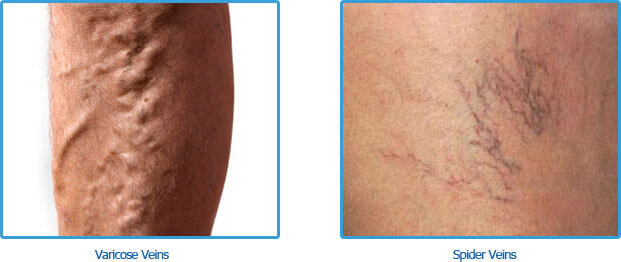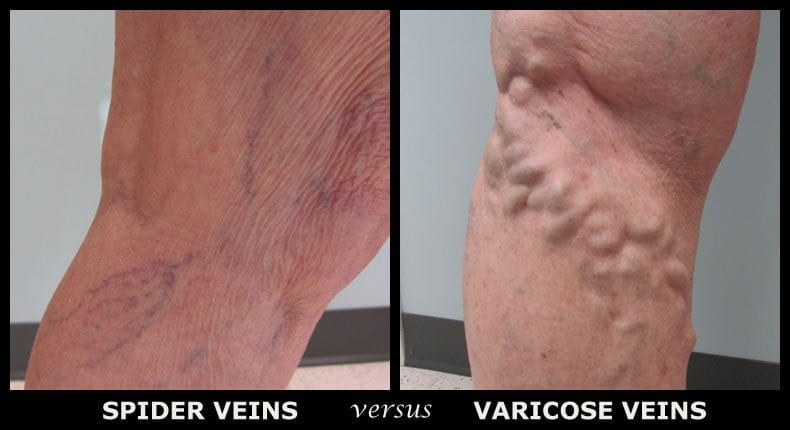
Varicose veins usually develop in the legs and can be seen through the skin.
Spider veins are smaller and easily visible through the skin as well. They are most often seen on the legs, chest, or face.

Causes
- Heredity
- Occupations that involve a lot of standing
- Obesity
- Hormonal influences during pregnancy, puberty, and menopause
- The use of birth control pills
- A history of blood clots
- Conditions that cause increased pressure in the abdomen including tumors, constipation, and wearing tight clothes like girdles
Other reported causes include trauma or injury to the skin, previous vein surgery, and exposure to ultraviolet rays.
Symptoms

Varicose veins are twisted, bulging blue blood vessels that can be seen and felt right under the surface of the skin.
-
- They can cause a feeling of heaviness, discomfort or swelling in the legs.
- They can lead to more serious health conditions such as non-healing sores and/or blood clots.
Spider veins appear as tiny red or blue lines, usually less than 1 mm in diameter, that look like branches or a spider web just below the surface of your skin.
-
- They’re almost always painless, do not cause leg swelling and generally do not lead to other health problems.
Treatment
Some treatment options for varicose veins and spider veins include:
- Wearing support stockings.
- Making lifestyle changes. Weight loss (if needed) and walking can help. Eating a low-salt diet helps reduce water retention and swelling.
- Sclerotherapy.
- Surgery.
- Lasers